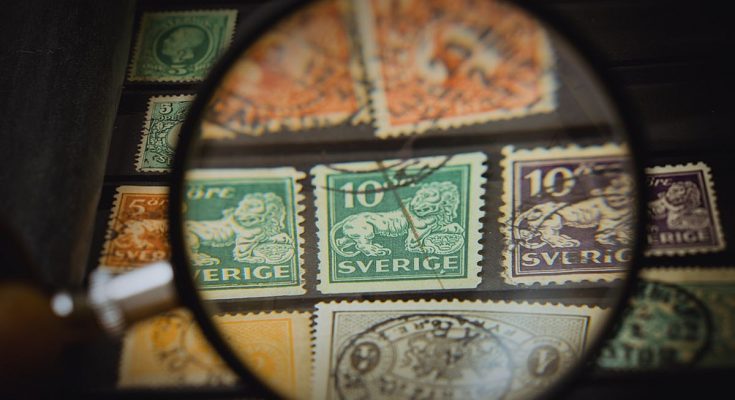Postage stamp collecting became a widespread hobby in many countries in the 19th century. It reached its peak in the 20th century and the hobby is now less popular than what it used to be – but that doesn’t mean that it is a small hobby. In 2013, the Wall Street Journal estimated that there were roughly 60 million stamp collectors in the world.
The first adhesive postage stamp, the famous Penny black, was issued in the United Kingdom in 1840. Before that, ink stamps made from wood or cork was the most common method utilized to confirm that postage had been paid by the sender.
One of the earliest known collectors of postage stamps was John Edward Gray, who – according to himself – started collecting postage stamps shortly after the first stamps were issued in the UK and well before postage stamp collecting had become trendy.
By the 1880s, postage stamp collecting was so popular that publishers like Stanley Gibbons had started selling specialized collectors albums and stamp related literature.
Equipment
Although no special equipment is required to collect stamps, many stamp collectors do own the following basic items:
- Stamp tongs, to pick up the stamps with
- Magnifying glass, to view the fine details of the stamps
- Album, for storing the stamps
Traditionally, stamps were often attached to album pages using stamp hinges. Since hinges can damage the stamp, and are a bit cumbersome to use, many modern stamp collectors prefer hingeless mounts (clear plastic holders that will stick to the album page) or use a stockbook where the stamps can be easily slotted into clear plastic pockets.
What is a first day cover?
A first day cover (FDC) is a postage stamp on a cover franked on the first day that the issue became valid for use. Many postal authorities will use a special first day of issue postmark to mark (cancel) the postage stamp. Some also hold a first day ceremony to celebrate the new issue and generate publicity that could translate into increased sales.
Postage stamp history
Postage stamps were introduced in the United Kingdom of Great Britain and Ireland in May 1840 as a part of postal reforms championed by Sir Rowland Hill. This is also when postmarks were introduced, to prevent postage stamps from being re-used.
The Penny black could be purchased from 1 May 1840 but wasn’t valid until 6 May. One Penny black postage stamp was enough to send on letter weighing less than half an ounce within the UK. On 8 May, the Two penny black was launched. Both the Penny black and the Two Penny blue displayed an engraving of Queen Victoria.
Inspired by the UK, the Canton of Zürich in Switzerland issued two stamps on 1 March 1843: the Zürich 4 rappen and Zürich 6 rappen. The former had the inscription “Local-Taxe” at the bottom and was intended for letters send within the city of Zürich. The latter had the inscription “Cantonal-Taxe” and was to be used on letters going somewhere within the canton.
In August that year, Brazil issued the Bull’s Eye stamps (Portuguese: Olho de boi) with a face value of 30, 60 and 90 réis. These postage stamps featured an abstract design instead of a portrait of Emperor Pedro II, because it was considered disrespectful to stamp the image of the emperor with a postmark.





